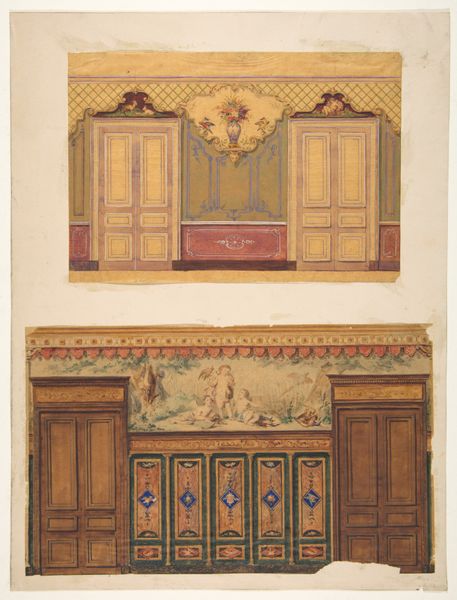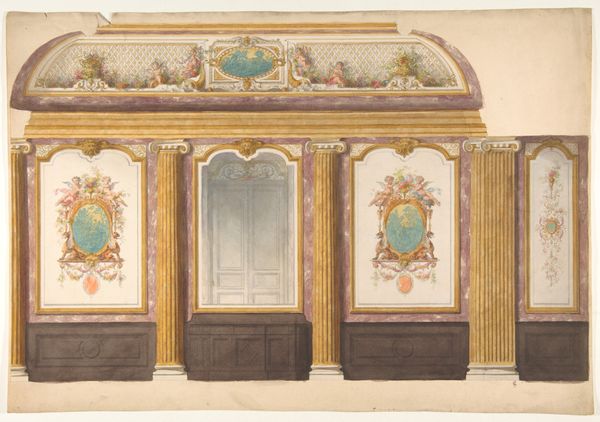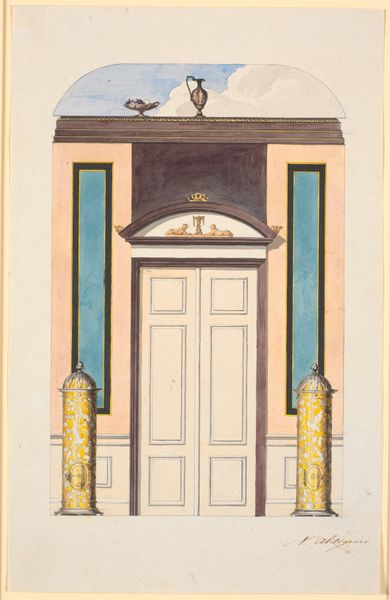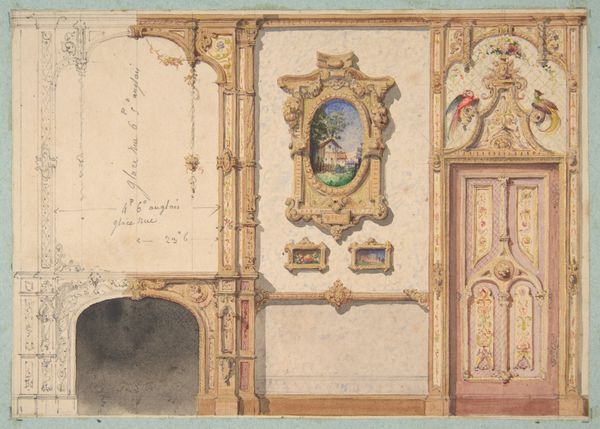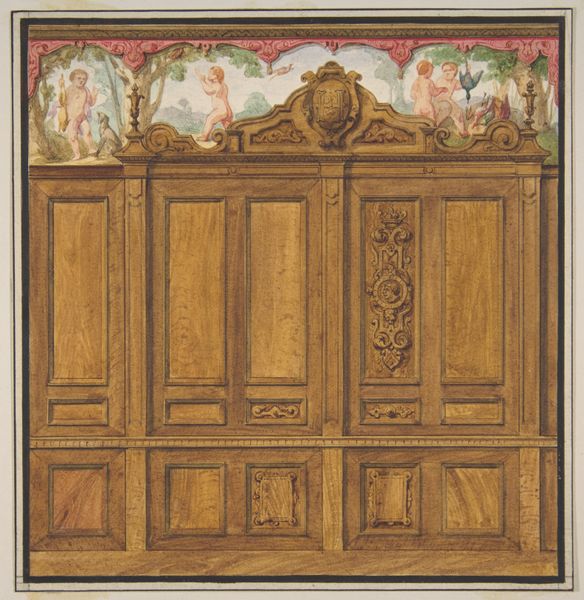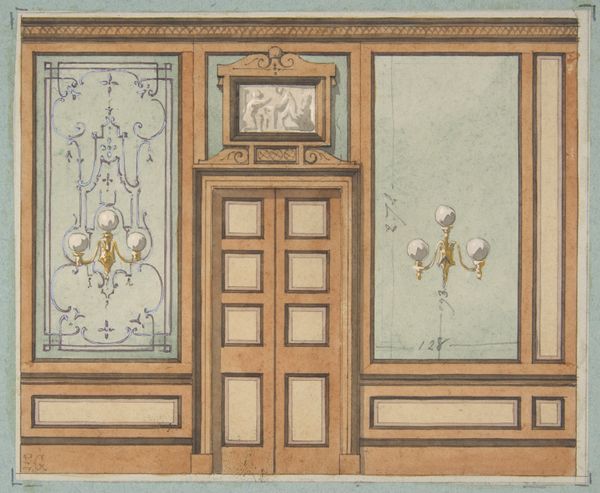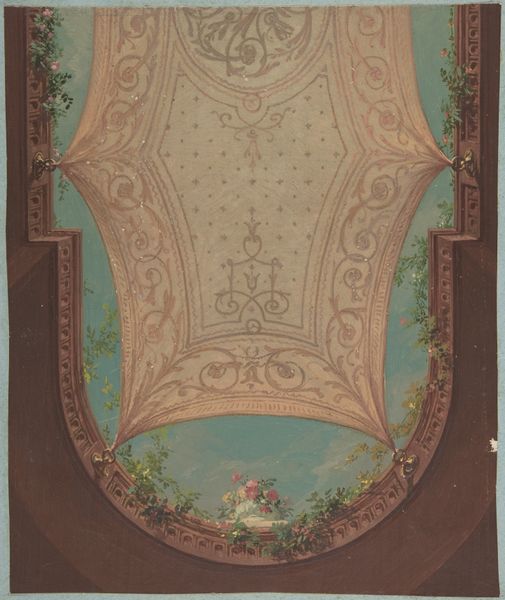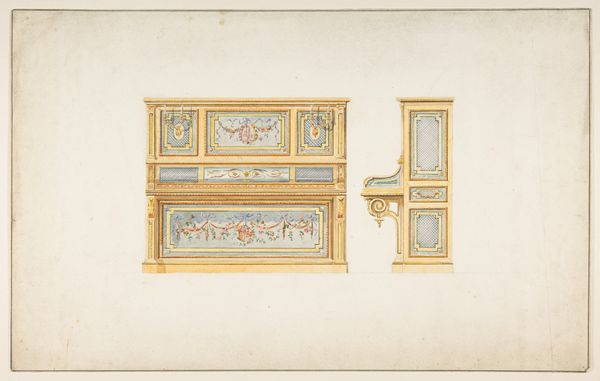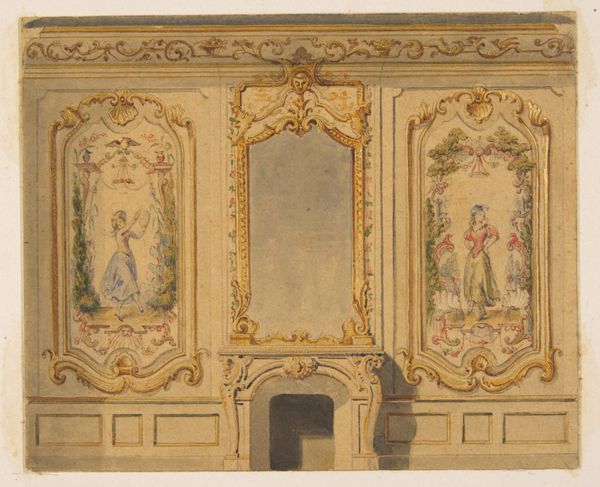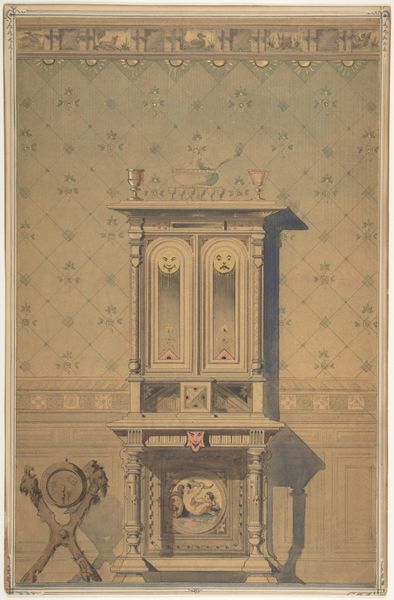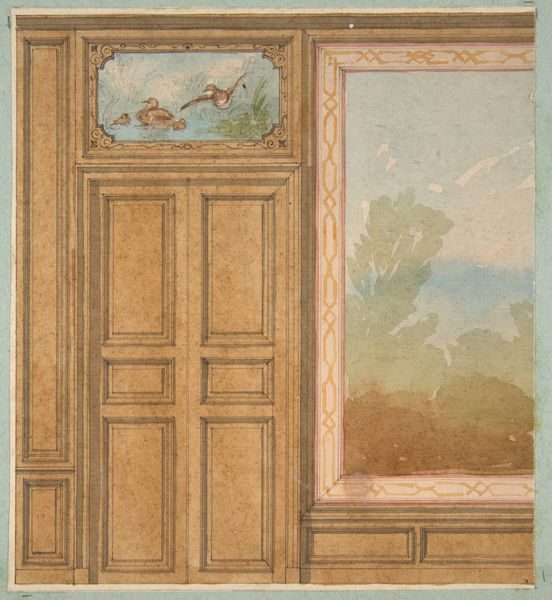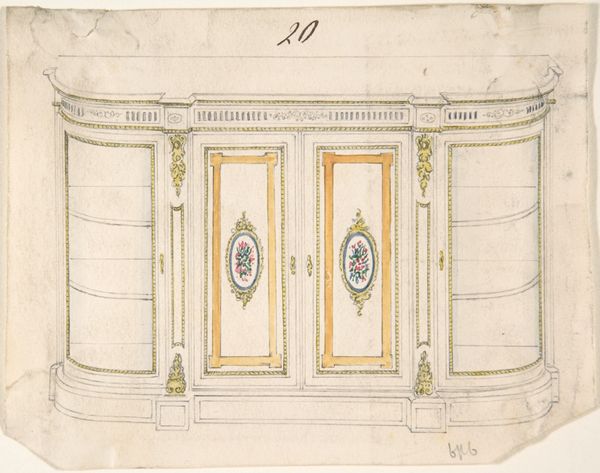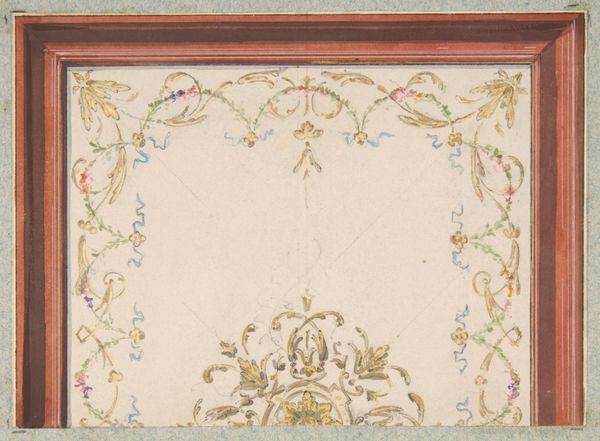
Design for a room with double doors decorated with garlands of fruit and flowers, scrolls, and lattice work 1830 - 1897
0:00
0:00
Dimensions: Overall: 9 1/2 x 12 5/16 in. (24.2 x 31.2 cm) image: 5 x 9 5/16 in. (12.7 x 23.7 cm)
Copyright: Public Domain
Curator: Looking at this, I immediately think of formal dinners and hushed conversations. There’s something about the symmetry and the muted palette that speaks to controlled elegance. Editor: Indeed. What we're seeing here is a design drawing by Jules-Edmond-Charles Lachaise, dating from around 1830 to 1897. The piece, currently housed at the Metropolitan Museum of Art, envisions a room adorned with garland motifs of fruit and flowers, scrollwork, and latticework, all rendered in watercolor and print. Curator: The garlands certainly evoke a sense of bounty, a celebration of nature contained within the domestic sphere. The fruit especially carries connotations of harvest and prosperity, almost a prayer for continuing good fortune displayed on the walls. Editor: Precisely. The incorporation of such classical elements like scrolls, the emphasis on balance and order—it firmly places this design within the Neoclassical tradition. It's interesting to note how Lachaise is not merely decorating a room, but seemingly constructing an ideology. Curator: That latticework along the upper wall… it gives me the impression of a structured foundation but the interwoven form hints at underlying societal relationships. And then framing this entire system are those vases, almost like focal points around which ideas collect, acting like an object for symbolic reverence. Editor: The doorways too are fascinating, not just portals but actively shaped by ornamentation that suggests passage is not simply physical, but ceremonial, transitioning to spaces of importance or ritual. I note the composition invites visual entry and exit. Curator: You're right; they demarcate movement both physically and, dare I say, spiritually. This space doesn’t just enclose; it guides, tells a silent narrative. There’s also an interesting tension. It seems formal but almost verges on excess. The symbols feel less potent as singular figures and the arrangement creates something with many messages and a singular absence. Editor: I concur. The work provides much fodder for thinking about decorative arts as not only beautifying elements but active conveyors of status, memory, and aspirational values. Curator: Yes, a snapshot of a world trying to cultivate permanence and pleasure, meticulously planned. Editor: Absolutely. The materiality, the application, speaks volumes about aspirations of grandeur in even the private domains of life.
Comments
No comments
Be the first to comment and join the conversation on the ultimate creative platform.
